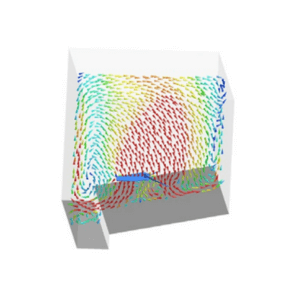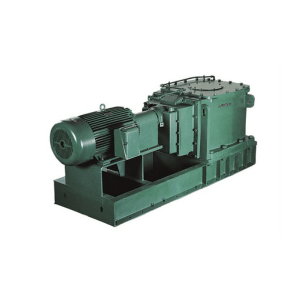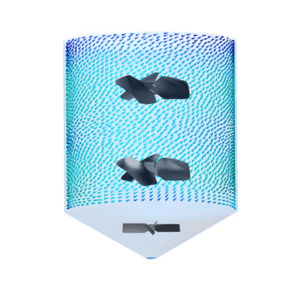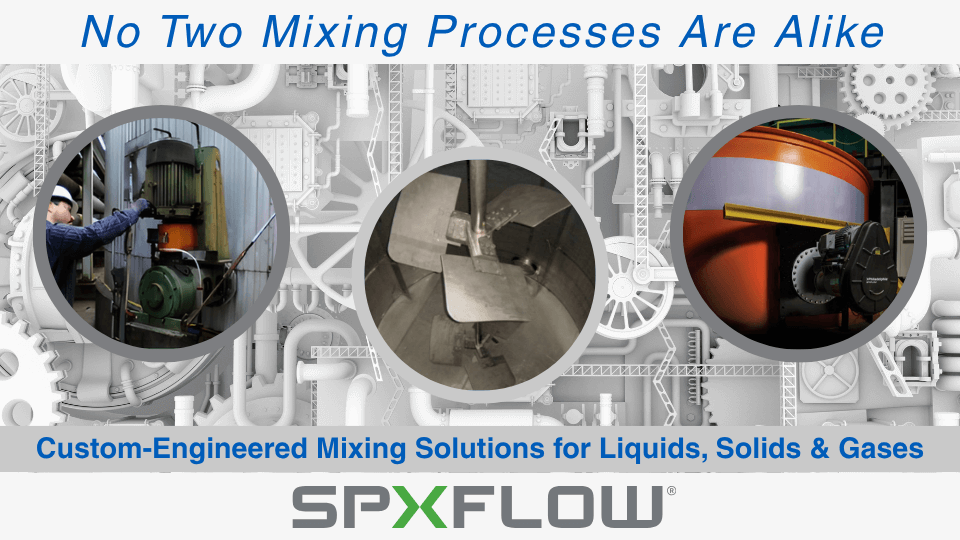When it comes to mixing solutions, no two scenarios are the same. The type, speed and design of an industrial mixer is contingent on the input phases of the solutes and solvents. Whether it's liquid–liquid, liquid-solid, solid suspension, or any number of other applications, each has intricate needs that require flexible solutions. Understanding the intricacies of each scenario is vital to defining the most effective mixing solution possible. This article discusses:
- Liquid & Solid Mixing
- Solid Suspension
- Liquid & Gas Mixing
- Multiphase Mixing
- Batch & Continuous Mixing
- Solid & Solid Mixing
- Solid & Gas Mixing
Liquid & Solid Mixing - often requires the deconstruction of agglomerated solids by suspending particles before destabilizing bulks of solid material. An example of this process occurs in the mixing of concrete, where solutes, cement and sand, are mixed with solvent and water to create a malleable and self-hardening

product.
Solid Suspension - The suspension of solids within an industrial mixing process improves the rate of mass transfer within the solution. SPX FLOW industrial mixers can be designed to meet any processing need. For example, while axial-flow impellers are typically suggested for solid suspension, radial-flow impellers used together with baffled mixing tanks can function just as effectively. A tank with baffles can rotate to convert the radial-flow impellers rotational motion into vertical motion to displace collected solids. Our ability to assess and offer high-quality solutions for solid suspension scenarios is what sets SPX FLOW apart.
Download The "Original" Mud Mixer Guide (PDF)
Liquid & Gas Mixing - The mixing of liquids and gases, or liquids-to-gasses, typically seeks a transfer of mass. The blending of gases and liquids, such as the integration of oxygen into a liquid, often benefits from extending the amount of contact time the gas has with the liquid. And because gases are often costly, an efficiently designed process could reduce input costs and minimize waste.
Download Energy Tearsheet (PDF)

Multiphase Mixing - a term used to describe a single process that combines solids, liquids and gases. Oftenoccurring as a catalytic chemical process, such as fermentation, solid microbes and gases must be dispersed through a liquid. SPX FLOW application engineers design custom industrial mixing processes based on the solution and properties of its multiphased reaction.
Download Flue Gas Desulfurization (PDF)
Batch Versus Continuous - Batch and continuous mixing refers to the way the industrial mixer functions within the overarching process. Batch refers to the processing of “batches,” or quantities of a solution at a time, then introducing a new “batch” after mixing the last. Continuous is a mixing process that is constantly blending a solution. SPX FLOW designs both continuous and batch mixing solutions customized for the needs of each customer.
Download Mixing Operations Health Report (PDF)
Download Mixer Modernization and Reliability (PDF)
Solid & Solid Mixing - The complexity of dry mixing is largely based in the segregation, capacity and validation within the process itself. For example, a continuous dry mixing process such as mulling foundry molding sand requires sand, water, clay and coal dust to be mixed into a moldable plastic product. Each input within the process must be added separately and only into mixtures that have been validated to contain the correct properties before mixing ensues. With more than a century of dry-mixing experience as a company, SPX FLOW engineers are experts in developing, predicting, and scaling specific mixing behavior.
Solid & Gas Mixing - The mixing of gaseous reactants with particulate solids is reliant on several process factors particularly the density, size and shape of the solid particulate used in the solid-gas mixing process. These factors are directly related to the level of gas integration and often the duration of the mixing process. Another factor we consider is the force in which the gas is introduced. For example, gases are often introduced using turbulent eddies which means gases must have enough force to suspend the solid particles in order to facilitate an optimal mixing process.
What do I do when Mixers need Service?
It’s smart to buy world class mixing solutions, but another primary benefit of working with Centennial Equipment and SPX FLOW is our service. Thanks to the strength of our combined brands, we can service you quickly wherever you are located.

When are Impeller Agitators Required?
Impeller agitators, similar to ribbon mixers, blend through a configuration of protruding blades on an axis. They can be used in wet mixing, slurry mixing, and high-velocity applications, due to the variability of the mixing blades themselves. Centennial and SPX FLOW application engineers can optimize a paddle mixer to a client’s mixing needs to fit their processes.
Download Personal Care and Home Care (PDF)
Download Pharmaceutical and Biotechnology (PDF)
How can we Optimize our Mixing Process with the Latest Innovations?
SPX FLOW agitators are designed custom to the specified needs of the customer's process. The SPX FLOW global mixing lab in Rochester, New York, features a 50-foot square basin for the testing agitators, surface aerators and other large scale mixing solutions. SPX FLOW application engineers design high-performance equipment through the testing and acute measurement of custom-designed applications.

